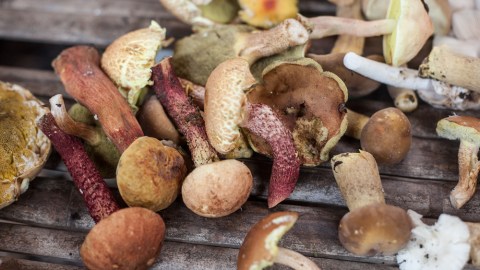Love Mushrooms? Learn to Forage Them (and Avoid the Bad Ones).

Tama Matsuoka Wong has the very cool title of “Resident Forager” at cooking website Food52. In a piece posted yesterday (and cross-posted at Grist), Wong offers her readers a very basic introduction to visiting local fields and forests in search of flavorful fungi. As is becoming of any good nature writer, Wong’s words are beautifully strewn on the page, her rain-softened landscapes come alive with every sentence. Needless to say, I highly recommend giving her a read.
Wong began foraging mushrooms after learning about them through her local mycological association. Mycology, for those unfamiliar with the term, is the biological study of fungi. Wong recommends that you talk with an expert before you walk out into your local woods and start collecting every ol’ mushroom you see. That’s because a good mycologist can give you tips so you can avoid becoming a victim of poisoning via ignorance.
For example, Wong learned to identify one of the most poisonous mushrooms in nature: the deathcap(Amanita phalloides):
“It looks beguilingly like an Alice in Wonderland toadstool, with a little parasol cap on top of a stem and gills. There is no antidote for consuming this mushroom, and within a few days you will die of liver failure. My mycologist advises that the safest way to start foraging mushrooms is to avoid the ones that look like, well, mushrooms! Poisonous young amanitas can look like small puffball mushrooms before their gills grow. Other poisonous mushrooms include the false morel (the inside is not hollow) and the little brown mushroom.”
So it sounds like if you’re staring down a mushroom that resembles the character Toad from Super Mario, it’s best to leave it be.
Wong explains that there are many advantages to foraging your own mushrooms. Not only can it be a fun outing and an opportunity to get in touch with nature, your fresh fungi will taste better and fresher than those you buy under plastic wrap. If you’re interested in giving it a shot, check out Wong’s article (linked again below) to learn how to get started, as well as how to keep your liver working once you cook up your catch.
Read more at Grist
Photo credit: Coffee Lover / Shutterstock





